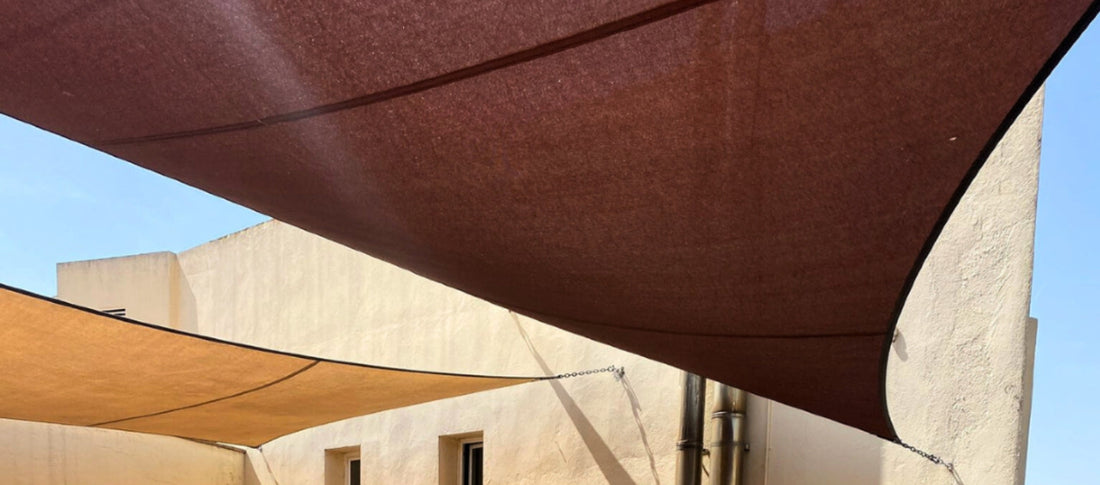
PVC Fabric Outlasts PE Under Desert Conditions
يشارك
he Middle East is known for its harsh environmental conditions — intense heat, strong UV radiation, dust storms, and low humidity. For industries relying on reliable shade, shelter, or outdoor protection, choosing the right tarpaulin material is critical. Two common options are PVC (Polyvinyl Chloride) coated fabric and PE (Polyethylene) woven fabric. But which one stands up better to the challenges of the region?
1. Heat Resistance: PVC Outperforms in High Temperatures
PVC tarpaulin is engineered for high-temperature environments. It maintains dimensional stability and mechanical strength even when exposed to prolonged sun and surface temperatures exceeding 60°C — a common scenario in GCC countries. In contrast, PE tarps tend to soften or deform under prolonged UV and heat exposure.
Conclusion: PVC offers better thermal stability for long-term outdoor use in the Middle Eastern climate.
2. UV and Weather Resistance
Middle Eastern regions experience over 10 hours of intense sunlight daily for most of the year. PVC tarpaulins are typically treated with UV stabilizers, and many come with additional PVDF or acrylic top coatings to enhance weather resistance and self-cleaning properties. PE tarps, while affordable, degrade faster under UV radiation, leading to brittleness and color fading.
Conclusion: PVC tarps last longer and retain performance under constant UV exposure.
3. Strength and Durability
PVC tarpaulin fabrics, especially those reinforced with high-density polyester base cloth (e.g., 1000D), offer excellent tear resistance, tensile strength, and puncture resistance. This makes them ideal for:
- Car parking shades
- Sidewall awnings
- Industrial covers
- Tension structures
PE tarpaulins are lightweight and less expensive, but their woven structure and thin lamination are more prone to tearing under stress or wind.
Conclusion: For heavy-duty or semi-permanent applications, PVC is more reliable.
4. Dust and Sand Resistance
Dust is a constant concern in many parts of the Middle East. PVC’s smooth surface and optional anti-dust top coating help prevent dust buildup and make cleaning easier. PE tarps, with their textured surface, attract and hold onto sand and dust particles more easily.
Conclusion: PVC is better suited for dusty environments due to its smooth, cleanable surface.
5. Cost vs. Performance
PE tarps are lower in cost, making them suitable for temporary use or short-term projects. However, if you’re looking for long-term performance, less maintenance, and higher visual and structural quality, the initial investment in PVC pays off over time.
Conclusion: PE is cost-effective for short-term use, but PVC delivers better ROI for durable, high-performance applications.
For the hot, dusty, and UV-intense environment of the Middle East, PVC tarpaulin is the clear winner when it comes to strength, longevity, and climate resilience. Whether you're building a car parking shade in Riyadh, an industrial awning in Dubai, or a sidewall tarp in Muscat, uctextile's high-performance PVC tarps are engineered to meet your needs.
Contact us today for tailored recommendations, technical specifications, or sample requests.
